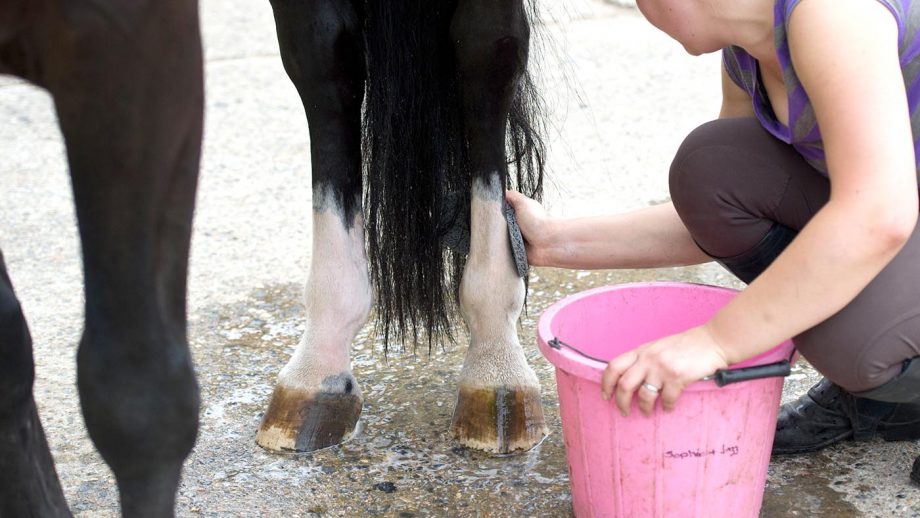When it comes to English dressage, choosing the right horse breed is essential to success. Dressage, known for its precision and elegance, benefits greatly from specific traits found in certain breeds. If you’re new to dressage or a seasoned rider considering a change, it’s crucial to understand which breeds excel in this sport. Two breeds consistently rise to the top: the Warmblood and the Thoroughbred.

Understanding English Dressage
Dressage is not just any equestrian sport; it is an art form. Originating centuries ago, it showcases the highest level of horse training. This discipline requires balance, flexibility, and responsiveness from the horse. Riders and horses work together to perform a series of predetermined movements, known as ‘tests,’ judged on precision, ease, and grace.
The Importance of Choosing the Right Horse Breed
Not all horse breeds are cut out for dressage. It requires a unique combination of physical and mental attributes. The perfect dressage horse is cooperative, intelligent, and poised. This is why certain breeds stand out in the dressage arena.
Traits of a Top Dressage Horse
- Elegant movement
- Strong and flexible physique
- Trainability and intelligence
- Calm disposition
The Warmblood: A Powerhouse in Dressage
Warmbloods are often the first choice for dressage enthusiasts. These horses, which include popular breeds like the Hanoverian, Dutch Warmblood, and Holsteiner, are known for their strength and amplitude in movement. A Warmblood’s ability to balance power and finesse makes it a natural fit for English dressage.
Popularity of Warmbloods
Their dominance in international competitions is unmistakable. Warmbloods have consistently proven to be reliable, competitive, and versatile in dressage.
The Thoroughbred: An Agile Contender
Thoroughbreds are traditionally known for racing, but their agility, stamina, and responsiveness make them suitable for dressage. They bring a different flair to the sport, often exhibiting more natural movement and quick learning capabilities.
The Versatility of Thoroughbreds
Aside from racing, Thoroughbreds are increasingly recognized in competitive dressage circles for their endurance and spirit. They offer a different, yet effective approach to the sport.
Comparing Warmbloods and Thoroughbreds
While Warmbloods are seen as the classics in dressage, known for their structured movements and presence, Thoroughbreds bring in a unique challenge with their adaptability and vigilance. Each rider’s preference might vary based on what they value more in a horse.
Choosing Between Warmbloods and Thoroughbreds
- If you prefer steady, powerful movements, a Warmblood might be the right choice.
- If you value agility and a slightly more energetic ride, a Thoroughbred could meet your needs.
Training and Preparing for Dressage
Once you’ve chosen your breed, rigorous training is next. Groundwork and exercises that build bond with your horse are essential. Both Warmbloods and Thoroughbreds thrive on attention and practice.
Getting the Right Gear
Equipping your horse with the proper gear enhances performance. Refer to our guide on essential riding gear for more insights.
Caring for Dressage Horses
Proper care can keep your dressage horse at peak performance. Whether it’s understanding storing your riding gear or implementing horse first aid, every bit counts.
Conclusion: Making the Right Choice for Dressage
Determining what are the two horse breeds best for English dressage molds down to personal preferences and competition level. Both Warmbloods and Thoroughbreds can be excellent choices, each offering unique benefits in different areas of dressage.

FAQs
1. Can other breeds perform well in English dressage?
Yes, while Warmbloods and Thoroughbreds are popular, other breeds can excel depending on their training and natural abilities.
2. Are Thoroughbreds too spirited for dressage?
Not necessarily. With proper training and handling, Thoroughbreds can be just as disciplined as any dressage horse.
3. What should a beginner consider when choosing a horse for dressage?
Beginners should consider the horse’s temperament, trainability, and compatibility with the rider’s skill level.







